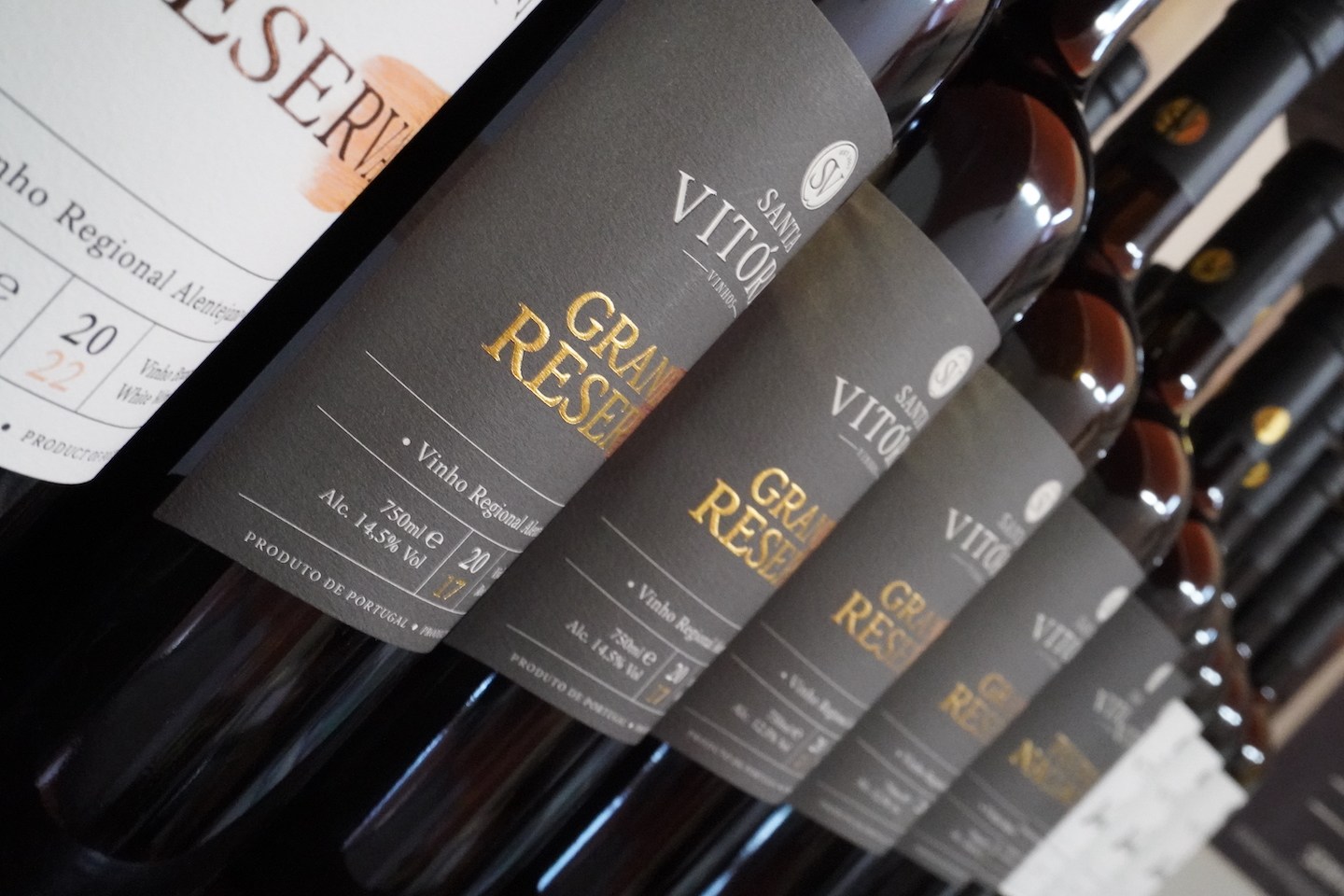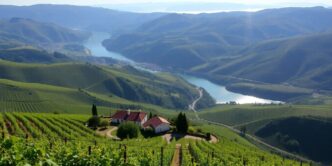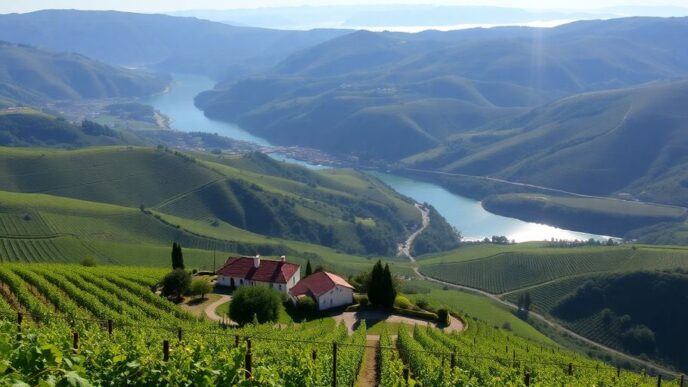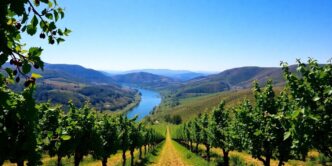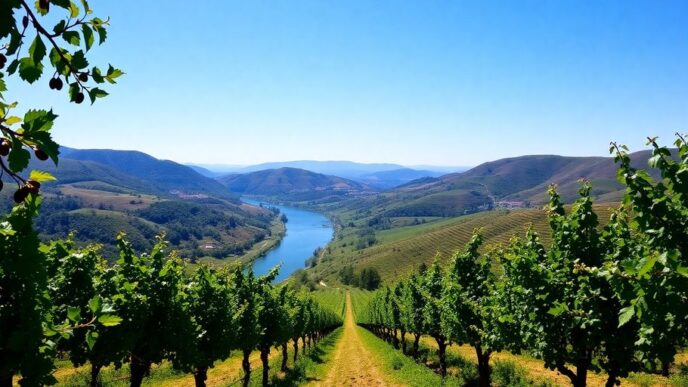The Diversity of Portuguese Wine Regions
Exploring the Wine Regions of Portugal
Portugal’s wine landscape is as diverse as it is historic, with each region offering a distinct experience for the palate. The country is home to 13 wine regions, each with its own unique climate, soil, and grape varieties. Despite its modest size, comparable to the state of Indiana, Portugal stands as the 11th largest wine producer globally.
The most notable regions include Alentejo, Dão, and Bairrada, each with a rich winemaking heritage. Alentejo, the largest wine region in Portugal, is particularly renowned for its amphora winemaking revival and the emergence of artisanal producers. Here’s a glimpse at some of the regions and what they are known for:
- Alentejo: Known for its vast vineyards and innovative amphora winemaking.
- Dão: Esteemed for its elegant, complex reds and granite terroir.
- Bairrada: Famous for its full-bodied reds and the indigenous Baga grape.
- Vinho Verde: Celebrated for its refreshing, slightly effervescent young wines.
Portugal’s dedication to wine is evident in its consumption, boasting the highest per capita wine consumption in the world. This passion is a testament to the quality and variety of wines that the country produces. From the crisp, minerally whites of the north to the robust, fruit-forward reds of the south, Portugal’s wine regions offer a rich tapestry of flavors waiting to be explored.
The Unique Terroir of Portugal’s Wine Country
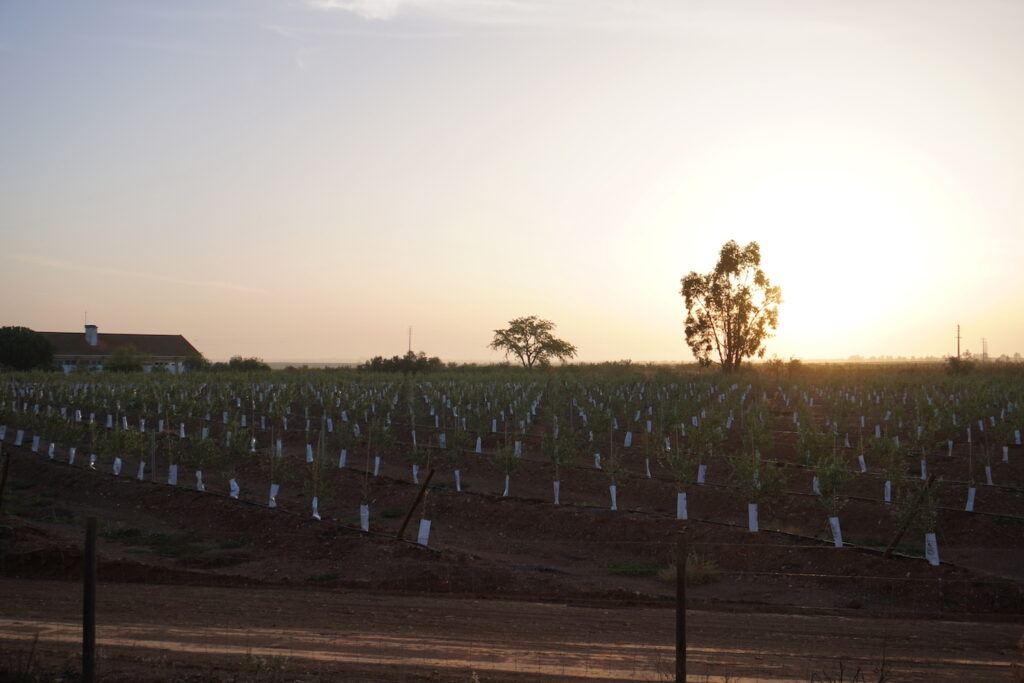
Portugal’s wine country is a testament to the unique interplay between climate, soil, and tradition, creating a terroir that is as diverse as it is distinctive. The Douro River Valley, for instance, is not only the cradle of the famous Port wine but also a rising star in producing red table wines, thanks to innovative winemakers like the ‘Douro Boys.’ The region’s white wines, such as the Redoma, are gaining acclaim for their complexity and class, showcasing the potential of indigenous grape varieties.
The country’s size belies its wine-producing prowess, with 13 distinct wine regions each contributing to the tapestry of Portuguese viticulture. From the bright ruby hues of the Torre de Pias Vinho Tinto to the traditional amphora winemaking of Alentejo, Portugal offers a range of wines that reflect its varied landscapes and winemaking heritage. The maritime climate of regions like Bairrada imparts unique characteristics to the wines, with grapes such as Bical and Maria Gomes thriving in these conditions.
Here is a snapshot of the diversity found within Portugal’s wine regions:
- Douro Valley: Renowned for Port and increasingly for red table wines.
- Vinho Verde: Known for its young, fresh wines with a slight effervescence.
- Alentejo: Largest wine region, famous for its amphora wines and artisanal winemaking.
- Dão: Esteemed for its elegant, complex reds and robust whites.
- Bairrada: Influenced by the Atlantic, it produces aromatic whites and structured reds.
The Portuguese wine industry is not just about quantity but also about the exceptional value and quality that can be found across its varied regions. As the country with the highest wine consumption per capita, Portugal’s love affair with wine is both a cultural cornerstone and a window into its soul.
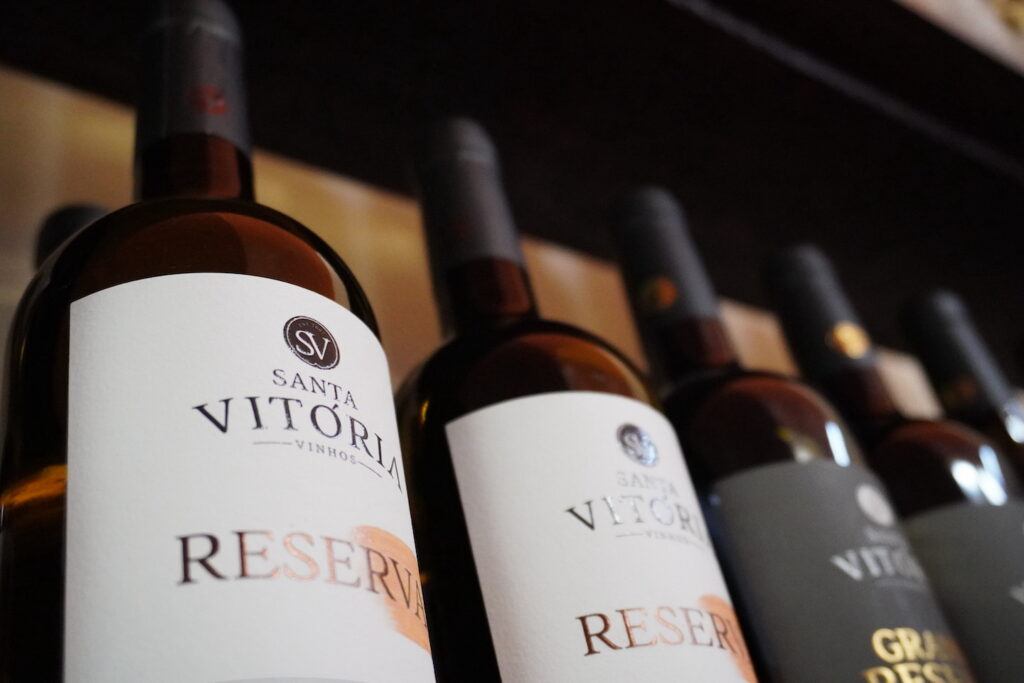
A Journey Through Portugal’s Wine History
The history of Portuguese wine is as rich and varied as the country’s landscape. From the ancient vine cultivation by the Phoenicians, Romans, and Moors to the establishment of the Douro Valley as the world’s first wine appellation in 1756, Portugal’s wine heritage is steeped in tradition. Yet, it is not just the past that defines Portuguese wine; the industry has embraced modernity with open arms. The adoption of contemporary viticultural and oenological practices has propelled Portuguese wine into a new era of quality and innovation.
Portugal’s wine evolution is evident in the diverse range of wines produced today. The country’s commitment to indigenous grape varieties has fostered a unique wine profile that stands out on the global stage. Moreover, the recent focus on dry table wines has led to a surge in quality and recognition, with regions like the Douro Valley leading the charge. The Quinta do Crasto, once known solely for its Port wines, now produces some of Portugal’s most acclaimed dry reds, showcasing the potential of Portuguese winemaking.
The table below highlights key milestones in the history of Portuguese wine, reflecting the blend of tradition and progress that characterizes the industry:
| Year | Milestone |
|---|---|
| 1756 | Establishment of the Douro Valley as the first wine appellation |
| 1986 | Portugal’s entry into the European Union, leading to modernization of the wine sector |
| 2000s | Rise of dry table wines and international acclaim for Portuguese reds |
As we appreciate the vibrant and complex wines of Portugal today, it is essential to recognize the journey that has brought the industry to where it stands. The rich history and modern evolution of Portuguese wine continue to unfold, promising an exciting future for wine enthusiasts around the world.
Portuguese Wine Varieties & Their Characteristics
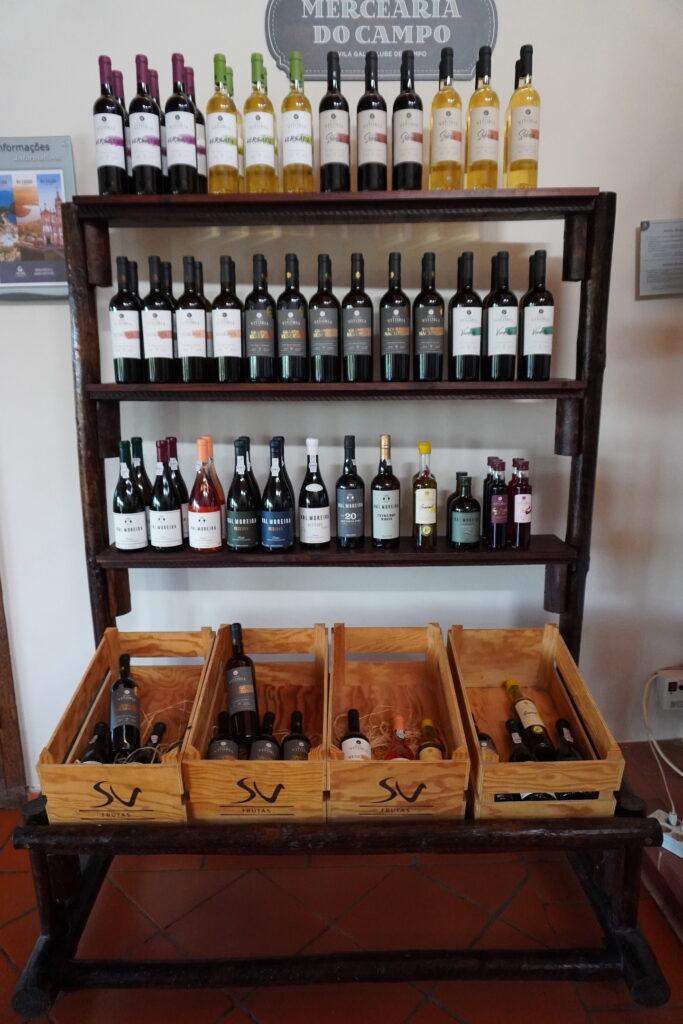
Indigenous Grape Varieties of Portugal
Portugal’s viticultural heritage is rich with over 250 indigenous grape varieties, each contributing to the country’s diverse wine portfolio. Among these, certain grapes stand out for their unique characteristics and the distinctive wines they produce. For instance, Antão Vaz, a white grape variety predominant in the Alentejo region, is celebrated for its aromatic profile and its ability to retain acidity in warmer climates, making it a versatile choice for winemakers.
The Douro Valley, renowned for its fortified wines, also cultivates prized native red grapes such as Touriga Nacional, Touriga Francesa, Tinta Roriz, and Tinto Cão. These varieties are integral to the production of both luscious ports and increasingly acclaimed dry red wines. The blend of these grapes results in wines with finesse and a true expression of the Douro terroir.
Here is a snapshot of some notable indigenous Portuguese grape varieties and their typical use:
- Antão Vaz: Predominantly found in Alentejo, used for aromatic white wines with good aging potential.
- Roupeiro: A perfumed white grape, resistant to diseases, often blended in Alentejano wines.
- Perrum: A low-acid white grape, widely grown in warm climates, commonly found in blends.
- Touriga Nacional: A flagship red variety, key in port production and dry reds, known for its concentrated flavors.
- Touriga Francesa: Often blended with other native varieties, adds finesse to both fortified and table wines.
- Tinta Roriz: Known internationally as Tempranillo, it brings structure and berry flavors to blends.
While these varieties may not have the same global recognition as some of their European counterparts, they are essential to the authenticity and allure of Portuguese wines. Exploring these indigenous grapes offers a glimpse into Portugal’s rich enological tapestry.
The Rising Stars of Portuguese White Wines

In recent years, Portuguese white wines have been gaining international acclaim, emerging as serious contenders alongside the country’s renowned reds. The evolution of winemaking techniques and a deeper understanding of the unique terroir have led to the production of whites that are both complex and refreshing.
One such example is the Quinta Casal Monteiro’s Arinto Terra de Touros from Tejo, a region not traditionally known for whites. This Arinto varietal, priced at an accessible $10, offers a floral and delicate profile with a crisp acidity, making it an excellent pairing for seafood dishes.
The Alentejo region, represented by Esporão’s Reserva White 2020, showcases a blend that delivers a rich midpalate and a chalky grip, with flavors of nectarine and grapefruit, all for $20. Similarly, the Douro Valley’s Ramos-Pinto White “Duas Quintas” 2005, a blend of Arinto, Rabigato, and Viosinho, combines stainless steel and oak fermentation to create a balanced wine with a bright, fruity aroma.
Adega de Redondo’s Vinho Branco “Porta da Ravessa 2020 from Alentejano, priced at $15, is a testament to the diversity of Portuguese whites. With a blend of Verdelho, Arinto, and Antão Vaz, it offers a viscous texture that carries flavors of pear and lemon zest through a long finish, distinguishing itself from the crisp profile of Vinho Verde.
These wines are just a few examples of the exciting developments in Portuguese white wines, which are sure to delight both new and seasoned wine enthusiasts.
Red Wines of Portugal: A Spectrum of Flavors
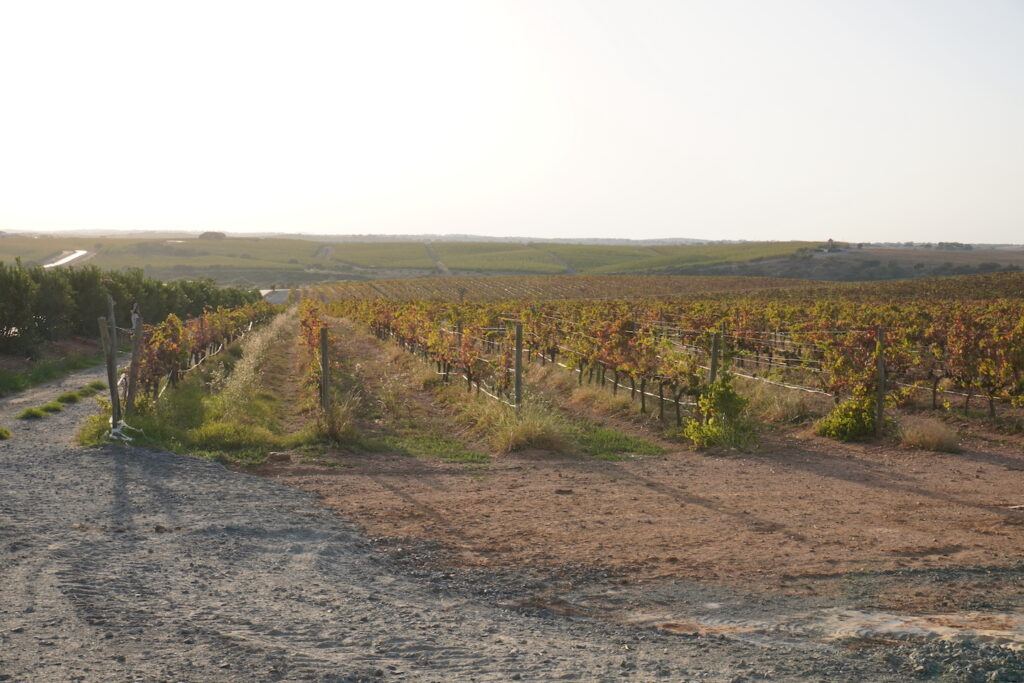
The red wines of Portugal are as diverse as the regions from which they hail. The Douro Valley, for instance, is not only the birthplace of the world-renowned Port but also a rising star in the production of red table wines. Influential winemakers, such as the ‘Douro Boys’, have been pivotal in showcasing the region’s potential for non-fortified wines. These wines often exhibit a complexity and class that are distinctly Portuguese, with blends of indigenous grapes like Touriga Nacional, Tinta Roriz, and Touriga Franca leading the charge.
Portugal’s reds offer incredible value, often over-delivering for their price point. Whether it’s a bright ruby Vinho Tinto with lively fruit notes and smooth tannins or a robust red blend that pairs perfectly with grilled dishes, there is a Portuguese red wine to suit every palate and occasion. The commitment to quality and value is evident across the board, from the Douro DOC to the Vinho Regional designations.
The evolution of Portuguese wine has been remarkable, with a history stretching from 2000 BC to modern times. The establishment of winegrowing commissions, support from Europe, and the growth of small producers have all contributed to the flourishing of the industry. The creation of the Vinhos de Portugal brand in 2010 marked a significant milestone, further solidifying the country’s reputation as a producer of exceptional wines.

